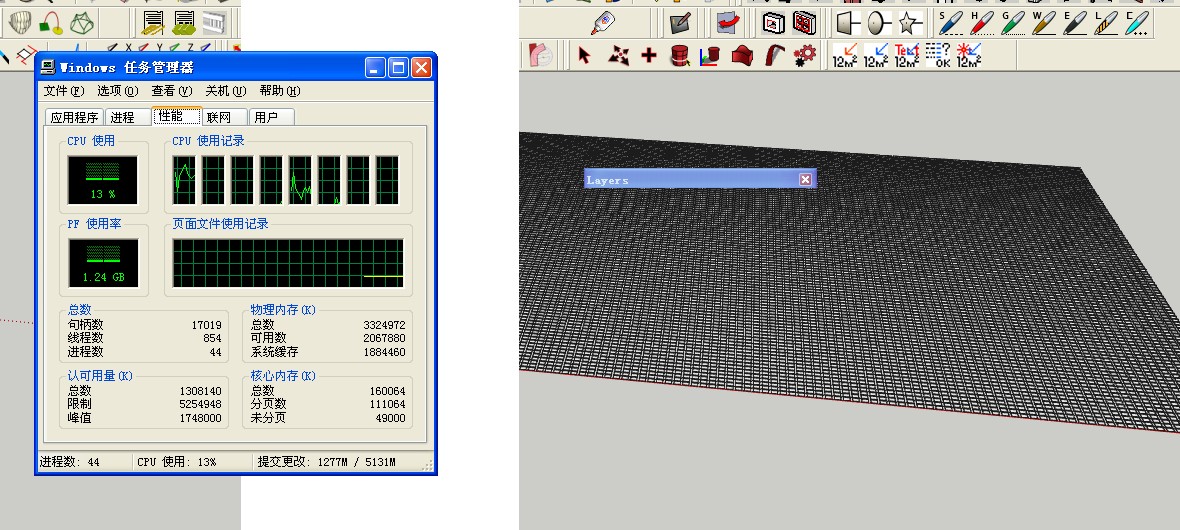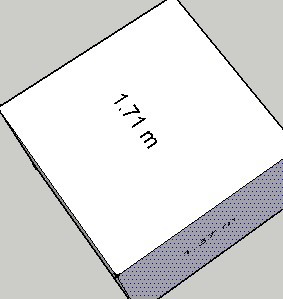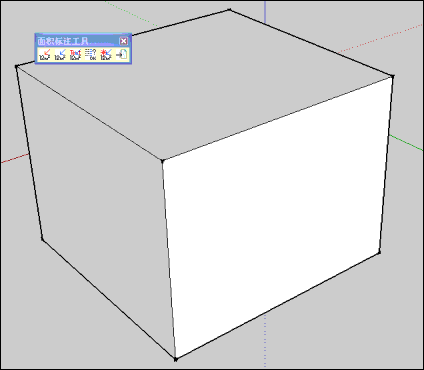[Plugin] AreaTextTag
-
Here's v1.4 http://forums.sketchucation.com/viewtopic.php?p=373717#p373717
The correct interpretation of UTF8 accented characters etc in customized area-tags has now been resolved.

-
OK...
You have the area-tags inside a locked-group.
It [should***] only reports on tags in the active_context.
So unlocking the group and editing it should then produce the CSV...
***BUT it fails - I am investigating why...
If I explode the group the area-tags export OK, BUT I notice the Unicode accented-character errors recurring - so I'll fix that at the same time...
Watch for an update soon... -
Hi again,
I noticed the behaviour you described and was about to post about it when I saw your comment.
One more thing about the exported cvs file if I may: as you can see I am using the following structure for the labels: label name, a new line and the area. The exported cvs outputs exactly this, in the form of "LABEL NAME\n<>", which does not seem very clean. What I can do is run a "find and replace" operation for "\n<>" in LibreOffice and delete it, but imo it would be cleaner if that information was not in the cvs exported file.Thanks for looking into this.
-
@tig said:
Here's v1.4 http://forums.sketchucation.com/viewtopic.php?p=373717#p373717
The correct interpretation of UTF8 accented characters etc in customized area-tags has now been resolved.

Wow, that was quick and effective. Now it works beautifully, thanks a lot!
I am having some trouble exporting to cvs though, the only contents of the exported file is "LAYER,TEXT,PERIM,AREA,UNITS". Perhaps I am doing something wrong, but I think I have followed the instructions properly (save as and then export to cvs). I am attaching you the skp file used in my tests.
-
Here's v1.5 http://forums.sketchucation.com/viewtopic.php?p=373717#p373717
The CSV reporting is fixed - it now uses correctly accented UTF8 characters, and now reports Tags in the active context properly [so if they are inside a group edit that group before running the reporter].
It now also strips all '\n' from reported 'names'
It substitutes '/' if there is multi-line text, other than 'name\n<>' which becomes 'name' anyway, whereas 'name\nmore\n<>' becomes 'name / more' in the reported name.
If the name includes text other than '<>' then the '<>' is always omitted - so 'name <>' becomes 'name '.
However, a Tag with just a '<>' [or '<->'] is still reported as named '<>'. -
I just tested it and works perfectly, I wish I had a hat to take of to you. Thank you so much!
-
Dear Tig:
good job!The CSV reporting is my want,Very slow when reporting ....

-
Its 'slowness' is because it must find all text-tags in the current context by sifting out other things, then it must 'update' them in case a tagged face has changed since the last update, it also must check for tags that are no longer glued to a face and ignore them, and also for duplicate tags placed on the same face and so on [this can be done beforehand using 'Update' manually, which might speed up the CSV a little]... the writing of the CSV file itself is relatively quick once the updating concludes...

I noticed that your CSV toolbar button icon is missing - I have missed it out of the subfolder set.
I'll add it to any future updates, but meanwhile if you substitute/add these two PNG files into the tool's subfolder it will fix the missing icon...


-
Dear Tig:
Here amount only:1001006=60000;slow !!Half an hour past it no finish!
if csv change to xml ?
or other way ?Thanks again !
-
OK!
Irrespective !
I only look forward to it change to very very quickly !Your job is great for all SU-FANS,I love you !
THANKS AGAIN
-
TIG, Many thanks for developing this.
I have just downloaded the RBZ and have tried a few variations of tagging but keep getting zero perimeters. The areas are working as expected with simple rectangles and no grouping. Bug or have I missed something?
Update: If I change "Report Surface Area" to Yes then perimeter is reported.
-
@arcad-uk said:
TIG, Many thanks for developing this.
I have just downloaded the RBZ and have tried a few variations of tagging but keep getting zero perimeters. The areas are working as expected with simple rectangles and no grouping. Bug or have I missed something?
Update: If I change "Report Surface Area" to Yes then perimeter is reported.
You must apply an area tag directly onto a face.... how the hell is it going to know what face to use if you apply it onto a group or instance ?
So... in the same [edit] context as the face you want to tag pick that face to add an area tag onto it.
If you later export those tags from that context into a CSV file the faces' areas and the faces' perimeters are returned...
The 'surface'=Yes tag is intended for adding area-tags to bound-faces that are 'facets' with hidden/smoothed edges, forming a 'surface' where you want the one area reported for all of them together, getting the perimeter of a 'surface' is much more complex than with a face [in fact it's too complex!]... -
Hi TIG, as per my update I was advising that with "surface" = No then the perimeter is not exported to the CSV which is what I was expecting. I now understand your reasoning and will default to "surface" = Yes.
Just a suggestion, reporting the perimeter in both modes may be more logical to the end user, but you know better than most what can be achieved with the coding.
Thanks again for another great contribution!
-

Can not correctly display units.
-
If the chosen font has no superscript 2 '²' it won't be shown.
What font is used?
Do you get one with other fonts [use the Settings dialog to adjust various aspects of the AreaText tags] ?
It might be your Chinese OS ?
Do you get any error messages in the Ruby Console [I'd expect not, because 3dText simply skips over missing characters in a font's collection].
If you copy paste this [1.23 m²] into the native 3dText tool's pane, for the same font [Arial?] what gets made ? Does the final '²' appear or not ??
This is what my Arial-Font AreaText tag looks like...
-
I choose Times New Roman, but the display unit does not
-
@guanjin said:
I choose Times New Roman, but the display unit does not
Have you tried my copy/paste suggestion using the native 3dText tool ?
-
Paste the local, show normal
-
It works fine for our western PCs?

As a temporary fix...
Edit the main .rb file inside this tool's subfolder using Notepad.exe.
Find the 4 occurrences of the text
.gsub(/2/,"²")
and change it to read
.gsub(/2/,"2")
then you will get
1.23 m2
instead of the intended [but failing]
1.23 m²
which whilst not perfect it is better.
If you would prefer
1.23 m^2
then change the replacement text
.gsub(/2/,"2")
to be
.gsub(/2/,"^2") -
Thank you, of TIG: has been resolved, thanks again!

Advertisement







